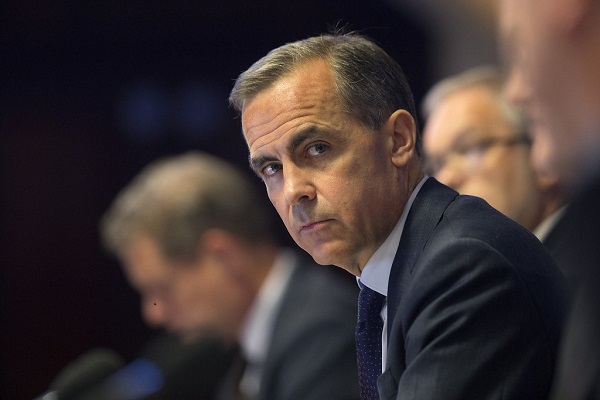Opinion
Climate Fears and Political Smoke Screens
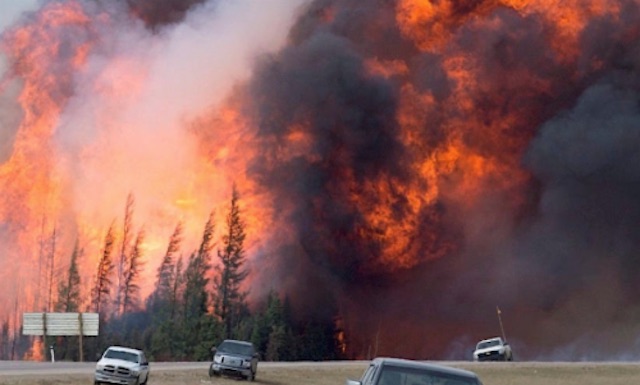
This article is from The Opposition With Dan Knight substack. |
|
Unmasking the Political Smoke and Mirrors Amidst Flames, Arson, and Fear
Good Morning my fellow Canadians! You know, the more things change, the more they stay the same, especially in our political landscape. Here we are, amid rising temperatures and heated debates, and as the wildfires burn brighter, so do the Twitter feuds among our politicians. Now, polls indicate that Pierre Poilievre’s Conservative Party is edging into majority territory, and well, that’s triggered a full-blown meltdown from the usual quarters.
First in line, Harjit Sajjan, Minister of Emergency Preparedness. He tweeted, ‘Canadians can’t afford leaders who refuse to believe climate change is real,’ citing our worst wildfire season on record. It’s a brilliant strategy, really; never waste a good crisis to get your point across. I mean, who cares about providing solutions when you can point fingers?
Jonathan Wilkinson, our valiant Minister of Energy and Natural Resources, criticizes the Conservative Party for not even trying to recognize that climate change is real. Jonathan, we’re still waiting for you to recognize that humans, actual Canadian citizens, are setting forests on fire deliberately. But sure, it’s all the Conservative Party’s fault. Hilarious!
And then the Liberal Party, oh, the Liberal Party, wagging its finger at all of us, saying, ‘Canadians want more climate action, not less.’ They say it like they’ve cracked the Da Vinci Code of Canadian public opinion. Really? Because last time I checked, polls are showing Canadians might want something a little different.
Let’s not forget the honorable Ryan Turnbull, a man who seems to believe that Pierre Poilievre is the harbinger of the apocalypse, promoting ‘ignorance, hate, division,’ and basically every bad thing you can think of. Clearly, Poilievre’s struck a nerve.
So why the desperation? Why the continuous fearmongering? Could it be because they’re afraid that Canadians are starting to see through the smoke—quite literally? Now, you and I both know that the Liberals would love nothing more than to make you believe that the world is on fire and it’s all because of climate change. The mantra: ‘The Earth is burning, so give us more of your hard-earned money to save it.’ But amid the hysteria, let’s focus. We’ve been through a rough wildfire season. Yes, we’ve all seen the headlines. Yet, here’s the twist. Smithsonian Magazine reveals that 84% of wildfires in our southern neighbor, the United States, are started by human activity. But hold on, in Canada, it’s just 55%. Why such a dramatic difference?
Are Americans simply more careless, or could it be that our authorities are quicker to dismiss human involvement for the more politically advantageous ‘climate change’? Isn’t it more convenient to blame the ambiguous, the uncontrollable, than to investigate potential criminal behavior, like arson, which could be preventable?
And it’s not just a rhetorical question. We have had multiple instances of arson across the country. In Mission, BC; in Mackenzie; in Vernon North Okanagan; in Castlegar; in Grand Forks; in Pictou County, Nova Scotia; in Yellowknife. Just recently, a man in Quebec was arrested for setting fires in forested areas. He’s facing charges. Yet, do you see the Liberal government or mainstream media making a big deal out of that? No, because it doesn’t fit the narrative.
In the flurry of headlines, accusations, and the general media hubbub about the wildfires in Quebec, we’re missing something truly elemental: the entire story.
Last month, CBC News blazed across our screens with a dire proclamation. Climate change made weather conditions that powered Quebec’s wildfires twice as likely. That was the conclusion from the World Weather Attribution initiative, a U.K.-based group. Their analysis came in the wake of the record-setting fires in Quebec, and its takeaway? Climate change is ramping up the heat, and in turn, igniting the forests.
Yan Boulanger, a scientist at Natural Resources Canada, even labeled these findings as ‘shocking.’ The province had seen an astonishing 5.2 million hectares burned. The entirety of Canada? A whopping 15.3 million hectares — shattering the previous record. As for this analysis, it’s yet to be peer-reviewed, but CBC was quick to point out the past track record of the research group.
And while those numbers are staggering and the climate concerns valid, there’s another piece of news that’s just as vital to digest.
Two days ago (almost a month later), Quebec provincial police arrested one Brian Paré in connection with — wait for it — numerous forest fires that ripped through the northern province. This isn’t about a stray campfire or a misplaced cigarette butt; this is deliberate, calculated arson. Paré faces charges for setting a fishing cabin ablaze and torching vast stretches of forest over a span of months. It took an army of behavior analysts, criminal profilers, and forensic psychologists to track this man down.
No mention of climate change in that courtroom, I assure you. Do you know what makes fires 100 times more likely? It’s not climate change; it’s ARSON!
Now, I can hear the chorus already, “Dan! Climate change sets the stage for these fires to be more devastating!” Sure, let’s talk about setting the stage. You see, while the liberal media and their academic buddies are blaming your SUV and your meat-eating habits for setting forests ablaze, they’re conveniently ignoring one glaring point: people—real, living human beings—are lighting these fires. Not the weather, not some cosmic karma for humanity’s supposed ‘sins’ against nature.
As for those numbers that supposedly show the weather conditions for these fires are twice as likely because of climate change? A not-yet-peer-reviewed study is your smoking gun? Come on.
And let’s not forget the broader context here. Remember British Columbia?Over 1.6 million hectares devoured by wildfires this year alone. Astonishing, until you dive into the numbers. This isn’t some climate-induced Armageddon; it’s a pattern, one that has a lot of variables—climate being just one small piece of it. Fires have raged for years, caused by everything from lightning to, yes, human negligence. Just ask the folks who remember the Chinchaga fire of 1950—the biggest one North America has ever seen.
Climate change is an easy boogeyman. You can blame it for everything and thus blame everybody, which leads to a broad call for action that usually translates to more control, more regulations, and more taxes. But what it does not lead to is a discussion on the complexities and nuances.
You see, Canada, that’s the sinister issue afoot here. It’s much easier to control a population that’s operating on fear, especially when you can stoke that fear with selective storytelling. As you mull over these points, ask yourself: are we being given the full story, or just the convenient parts that fit a certain agenda?
So you’ve got all these questions swirling in your head, right? Complexities, nuances, arson rates, and where is all that in the grand narrative? Nowhere. Because it doesn’t fit the script, the master plan of Trudeau and Guilbeault to keep you scared, to keep you submissive. They don’t want an informed public asking hard questions; they want a fearful public, willing to buy into whatever they’re selling.
And oh boy, are they selling. A carbon tax here, a trip to China there. It’s like they’re hawking fear from a roadside stand, only instead of selling you overpriced trinkets, they’re peddling overpriced delusions. It’s a yard sale of deception, folks, and the currency is hitting your wallet via taxes!
Alright, now that we’ve connected the dots, let’s dive back into the murky waters of Trudeau’s ‘progressive’ policies because it’s high time somebody said it. You’ve got Justin Trudeau and his trusty sidekick Steven Guilbeault treating the Canadian people like we’re all a bunch of morons. They want to talk about how ‘progressive’ their carbon tax is, and how it’s supposedly saving the planet. Let’s set the record straight: If their carbon tax were the life-saving vaccine for climate change they claim it to be, British Columbia should be a Garden of Eden right now. But guess what? It’s not.
Don’t you just love how they evade accountability? They’re like a couple of tap dancers sidestepping questions they don’t want to answer. Oh, they’ll tell you that it’s ‘complex,’ that you ‘wouldn’t understand.’ Really? You’re going to pull that card? How condescending can you be? This is the same Trudeau who wore blackface, remember? Now he’s judging your understanding of complex issues?
And let’s talk about Guilbeault’s trip to China. Oh yes, China—the world’s leading polluter. The irony is so rich, you could drizzle it on pancakes. What’s he doing there? Sharing tips on how to be environmentally unfriendly? It’s absurd! Yet, they continue to offshore Canadian manufacturing to China so that our country’s carbon footprint ‘looks’ smaller on paper. They’re just shifting the dirt under the rug! It’s all smoke and mirrors!
Now, I know what some of you are thinking, “But the Liberals are doing something about climate change!” Are they? Are they really? Because last time I checked, our forest management is underfunded, our firefighters are under-resourced, and people’s homes are going up in flames! All while Trudeau’s jet-setting around the world!
And let’s not even get started on their international dealings. They have the audacity to preach about ‘green energy’ while sending coal off to China. It’s like a doctor smoking a cigarette while advising you to live a healthy lifestyle. It’s absurd, laughable, and downright insulting to the intelligence of Canadians.
So, when Trudeau and Guilbeault start accusing the Conservatives of wanting to roll back their so-called ‘climate initiatives,’ you better believe the answer is YES! Because Canadians are fed up. They see through the lies, the sleight of hand, the empty gestures that are as hollow as a bamboo shoot!
People are no longer buying into their deceptive narrative. You’re tired of it. I’m tired of it. And you know what? The days of nodding along to sanctimonious drivel are over. Canadians want action, not platitudes. They want honesty, not deceit. And most importantly, they want competent leadership!
Canadians are not stupid. Far from it. We’re a nation of problem solvers, of innovators, of people who brave harsh winters and come out stronger for it. We deserve leadership that reflects that spirit, not one that seeks to divide us, to stoke fears and rely on alarmism to keep their grip on power. It’s high time our politicians understood that message. It’s high time they were held to account for treating Canadians like pawns in their ideological games
And come 2025, let’s make sure they get that message, loud and clear. Canadians are fed up. We’re through with the lies, the virtue signaling, and the blatant disregard for the people who make this country great. So let’s roll up our sleeves, Canada, and do what needs to be done. Let’s vote them out and reclaim the true north, strong and free!
Click here to see more from The Opposition with Dan Knight.
Business
Scott Bessent says U.S., Ukraine “ready to sign” rare earths deal
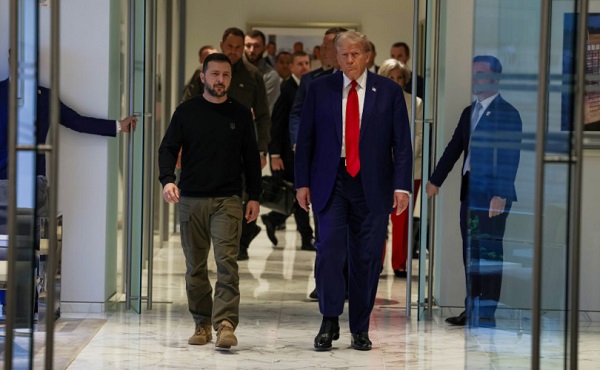
 MxM News
MxM News
Quick Hit:
During Wednesday’s Cabinet meeting, Treasury Secretary Scott Bessent said the U.S. is prepared to move forward with a minerals agreement with Ukraine. President Trump has framed the deal as a way to recover U.S. aid and establish an American presence to deter Russian threats.
Key Details:
-
Bessent confirmed during a Cabinet meeting that the U.S. is “ready to sign this afternoon,” even as Ukrainian officials introduced last-minute changes to the agreement. “We’re sure that they will reconsider that,” he added during the Cabinet discussion.
-
Ukrainian Economy Minister Yulia Svyrydenko was reportedly in Washington on Wednesday to iron out remaining details with American officials.
-
The deal is expected to outline a rare earth mineral partnership between Washington and Kyiv, with Ukrainian Armed Forces Lt. Denis Yaroslavsky calling it a potential turning point: “The minerals deal is the first step. Ukraine should sign it on an equal basis. Russia is afraid of this deal.”
Diving Deeper:
The United States is poised to sign a long-anticipated rare earth minerals agreement with Ukraine, Treasury Secretary Scott Bessent announced during a Cabinet meeting on Wednesday. According to Bessent, Ukrainians introduced “last minute changes” late Tuesday night, complicating the final phase of negotiations. Still, he emphasized the U.S. remains prepared to move forward: “We’re sure that they will reconsider that, and we are ready to sign this afternoon.”
As first reported by Ukrainian media and confirmed by multiple Ukrainian officials, Economy Minister Yulia Svyrydenko is in Washington this week for the final stages of negotiations. “We are finalizing the last details with our American colleagues,” Ukrainian Prime Minister Denys Shmyhal told Telemarathon.
The deal follows months of complex talks that nearly collapsed earlier this year. In February, President Trump dispatched top officials, including Bessent, to meet with President Volodymyr Zelensky in Ukraine to hammer out terms. According to officials familiar with the matter, Trump grew frustrated when Kyiv initially refused U.S. conditions. Still, the two sides ultimately reached what Bessent described as an “improved” version of the deal by late February.
The effort nearly fell apart again during Zelensky’s February 28th visit to the White House, where a heated Oval Office exchange between the Ukrainian president, Trump, and Vice President JD Vance led to Zelensky being removed from the building and the deal left unsigned.
Despite those setbacks, the deal appears to be back on track. While no public text of the agreement has been released, the framework is expected to center on U.S.-Ukraine cooperation in extracting rare earth minerals—resources vital to modern manufacturing, electronics, and defense technologies.
President Trump has publicly defended the arrangement as a strategic and financial win for the United States. “We want something for our efforts beyond what you would think would be acceptable, and we said, ‘rare earth, they’re very good,’” he said during the Cabinet meeting. “It’s also good for them, because you’ll have an American presence at the site and the American presence will keep a lot of bad actors out of the country—or certainly out of the area where we’re doing the digging.”
Trump has emphasized that the deal would serve as a form of “security guarantee” for Ukraine, providing a stabilizing American footprint amid ongoing Russian aggression. He framed it as a tangible return on the billions in U.S. aid sent to Kyiv since the start of Russia’s 2022 invasion.
Business
New federal government plans to run larger deficits and borrow more money than predecessor’s plan

Fr0m the Fraser Institute
By Jake Fuss and Grady Munro
The only difference, despite all the rhetoric regarding change and Prime Minister Carney’s criticism of the Trudeau government’s fiscal approach, is that the Carney government plans to run larger deficits and borrow more money.
As part of his successful election campaign, Prime Minister Mark Carney promised a “very different approach” to fiscal policy than that of the Trudeau government. But when you peel back the rhetoric and look at his plan for deficits and debt, things begin to look eerily similar—if not worse.
The Carney government’s “responsible” new approach is centered around the idea of “spending less” in order to “invest more.” The government plans to separate spending into two budgets: the operating budget (which appears to include bureaucrat salaries, cash transfers and benefits) and the capital budget (which includes any spending that “builds an asset”). The government plans to balance the operating budget by 2028/29 (meaning operating spending will be fully covered by revenues) while funding the capital budget through borrowing.
Aside from the fact that this clearly complicates federal finances, this “very different” approach to spending actually represents more of the same by continuing to pursue endless borrowing and a larger role for the government in the economy.
The chart below compares projected annual federal budget balances for the next four years, from both the 2024 Fall Economic Statement (FES)—the Trudeau government’s last fiscal update—and the 2025 Liberal Party platform. Importantly, deficits from the 2025 platform show the overall budget balance including both operating and capital spending.

Let’s start with the similarities.
In its final fiscal update last fall, the Trudeau government planned to borrow tens of billions of dollars each year to fund annual spending, with no end in sight. Based on its election platform, the Carney government also plans to run multi-billion-dollar deficits each year with no plan to balance the overall budget. The only difference, despite all the rhetoric regarding change and Prime Minister Carney’s criticism of the Trudeau government’s fiscal approach, is that the Carney government plans to run larger deficits and borrow more money.
In the current fiscal year (2025/26) the Trudeau government had planned to run a $42.2 billion deficit. The Carney government now plans to increase that deficit to $62.3 billion. Trudeau’s most recent fiscal plan forecasted annual deficits from 2025/26 to 2028/29 representing a cumulative $131.4 billion in federal government borrowing. Over that same period, the Carney government now plans to borrow a cumulative $224.8 billion.
The Carney government’s fiscal plan does include a number of tax changes that are expected to lower revenues in years to come—including (but not limited to) a personal income tax cut, the elimination of the GST for some first-time homebuyers, and the cancelling of the planned capital gains tax hike. But even if you exclude these factors from the overall budget, the Carney government still plans to borrow $52.9 billion more than the Trudeau government had planned over the next four years.
By continuing (if not worsening) this same approach of endless borrowing and rising debt, the Carney government will impose real costs on Canadians. Indeed, 16-year-olds can already expect to pay an additional $29,663 in personal income taxes over their lifetime as a result of debt accumulation under the previous federal government, before accounting for the promised increases.
One of the key promises made by Prime Minister Carney is that his government will take a different approach to fiscal policy than his predecessor. While we won’t know for certain until the new government releases its first budget, it appears this approach will continue the same costly habits of endless borrowing and rising debt.
-
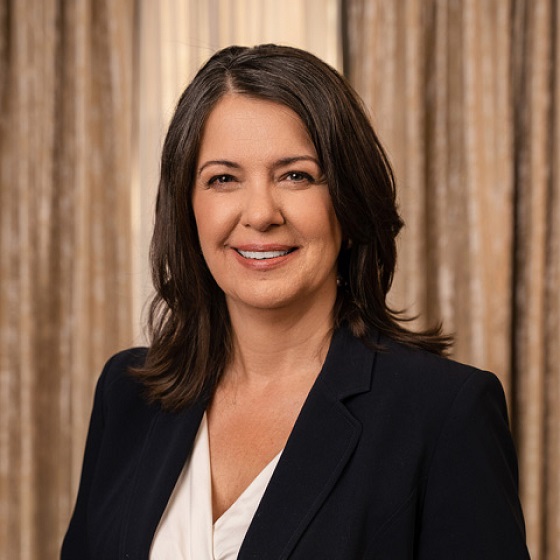
 Alberta1 day ago
Alberta1 day agoPremier Danielle Smith responds to election of Liberal government
-
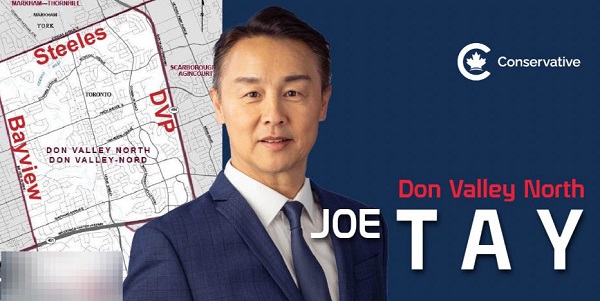
 2025 Federal Election1 day ago
2025 Federal Election1 day agoIn Defeat, Joe Tay’s Campaign Becomes a Flashpoint for Suspected Voter Intimidation in Canada
-

 Banks1 day ago
Banks1 day agoTD Bank Account Closures Expose Chinese Hybrid Warfare Threat
-
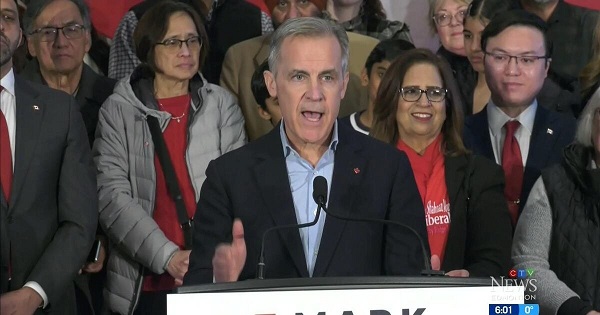
 Alberta1 day ago
Alberta1 day agoHours after Liberal election win, Alberta Prosperity Project drumming up interest in referendum
-
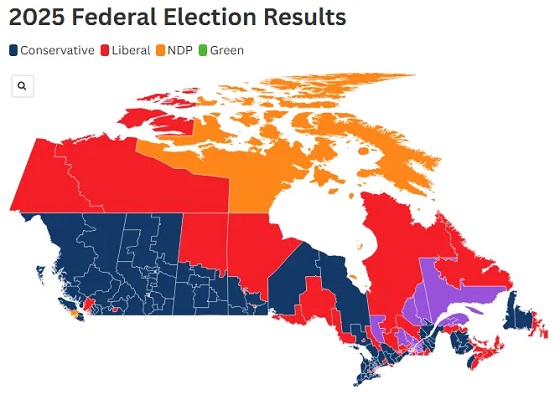
 2025 Federal Election1 day ago
2025 Federal Election1 day agoPost election…the chips fell where they fell
-
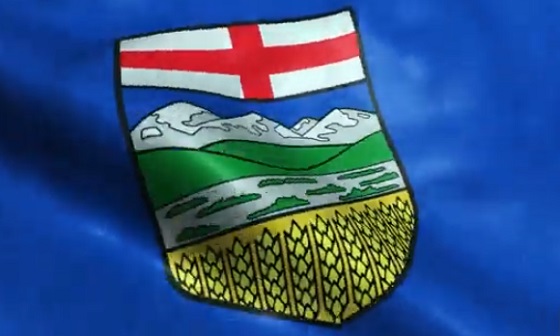
 Alberta1 day ago
Alberta1 day agoNew Alberta Election Act bans electronic vote counting machines, lowers threshold for recalls and petitions
-
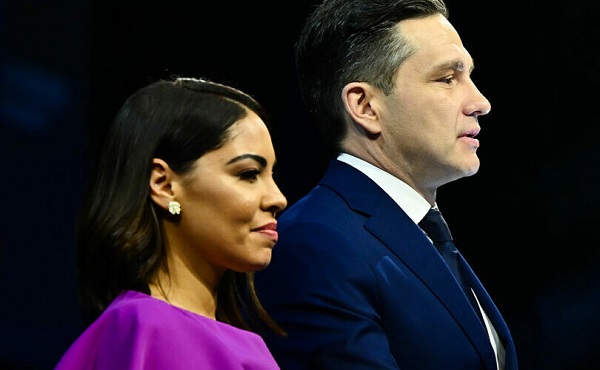
 2025 Federal Election1 day ago
2025 Federal Election1 day agoPoilievre loses seat but plans to stay on as Conservative leader
-
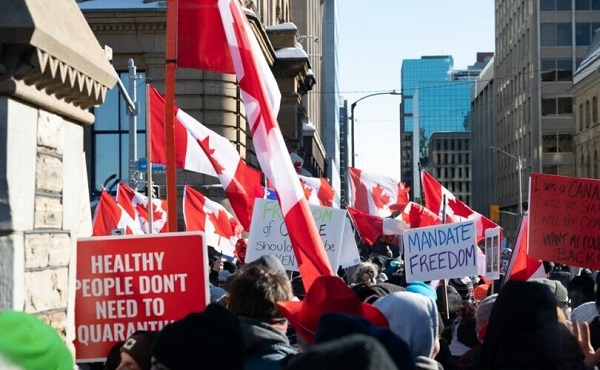
 COVID-191 day ago
COVID-191 day agoFreedom Convoy leaders’ sentencing judgment delayed, Crown wants them jailed for two years









